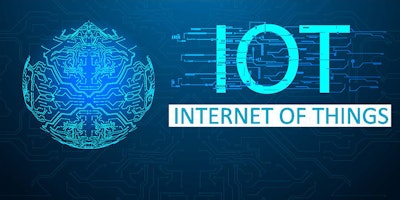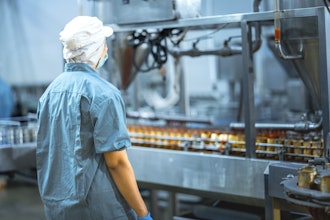
 J. Wright
J. WrightRecent recalls of eggs from a farm in North Carolina and romaine lettuce grown in Arizona indicate the need for a better system to prevent contamination in the food and beverage manufacturing industry.
Each year, more than 47 million people become ill from food produced in the United States, according to the Centers for Disease Control and Prevention. Additionally, 3,000 people die each year from food-related illness according to the CDC, with Salmonella being the number one contributor to hospitalization and death.[1]
With that in mind, food monitoring needs to become more effective. Right now, the Food and Drug Administration (FDA) is transforming food safety protocol by moving the focus from reacting to a problem to putting steps in place to prevent the contamination in the first place. Congress enacted the Food Safety Modernization Act (FSMA) in 2011 to treat foodborne illness as a public health problem and a threat to the food system.[2]
The end goal of reducing food-related illness, however, is not as simple as it seems. The steps involved for food to arrive at a dining table are a long, arduous journey with plentiful risks for contamination along the way.
The FSMA has seven rules that help ensure food safety throughout the many stages of the food supply chain. The rules are in effect for both human and animal food, and share specific actions that must take place at each point in the global supply chain to prevent contamination.
The ongoing theme for improvement is clean equipment. Sanitation is key to reducing illness, including how we sanitize and monitor everything related to food’s journey to the table. Americans assume their food is safe, but more and more, the contamination is happening at facilities that do not have established sanitation procedures.
Technology And Preventing Foodborne Illnesses
Internet of Things (IoT) technology is making better sanitation a reality. IoT is allowing for the consistent and constant monitoring of equipment. Sensors placed on equipment let maintenance engineers monitor temperatures and moisture to determine if there are problems on the equipment line. The focus of food and beverage manufacturers needs to change to managing and monitoring the process before a problem arises.
Another place contamination is regularly seen, is when there is a mechanical breakdown. A maintenance engineer is typically brought in to fix the machine, however the machine is often up and running again without being properly sanitized. All of these issues can be prevented with IoT technology and monitoring.
IoT And Food Manufacturing
We are moving past the time when workers need to be physically present to monitor every piece of equipment through which our food passes. By using internet-enabled devices, maintenance engineers are empowered to have better visibility into what is happening with equipment, inventory and people.
Internet-enabled sensors fastened on equipment provide critical insight into maintenance and food safety, including real-time, system-generated alerts and notifications. Maintenance engineers are able to access this real-time data from anywhere via smartphone or tablet. A few of the capabilities of an IoT system for food safety include:
- Providing real-time insight into the status of food-processing equipment
- Sending automated alerts as soon as any problems arise
- Providing the recommended next steps for troubleshooting and resolving the problem
An IoT system can also track equipment sanitation, maintenance and repair records, streamline communication between departments and create records for audits and government regulators.
The way to prevent food contamination is by detecting potential trouble before it happens. An IoT system allows the monitoring and procedures to be in place long before there is an issue, so that when trouble arises it is quickly resolved. IoT technology allows for constant monitoring — not the traditional weekly checks — and also provides cost savings as the sensors allow for maintenance engineers to notice changes in the equipment.
The costs savings of an IoT system do not stop there. This type of system also allows for multi-sites and multi-locations that can gather information on all assets, parts and works across the organization. The information collected on a daily basis allows repairs to be performed quickly — before they become larger problems — and decreases downtime.
The system can also include full inventory tracking. All repair parts can be stocked and tracked when used, so parts can be replaced before being needed. Again, all of this can be followed via the web or a mobile app. Any recalls or updates needed to bring equipment up to date can be easily tracked and then documented when completed.
The IoT has potential to change the way we think of food safety. These types of monitoring systems can allow for cross-contamination and food recalls to be a thing of the past. Keeping systems online will prove to be better for the bottom line of those in the food and beverage manufacturing industry.
J. Wright is VP of Sales for SOMAX
[1] https://www.cdc.gov/foodborneburden/2011-foodborne-estimates.html
[2] https://www.fda.gov/Food/GuidanceRegulation/FSMA/default.htm




















